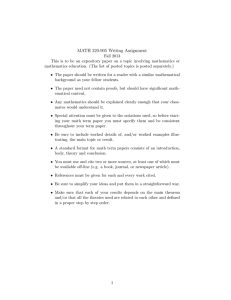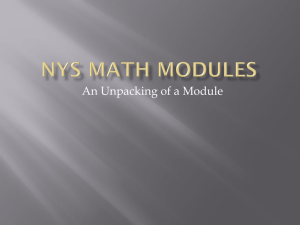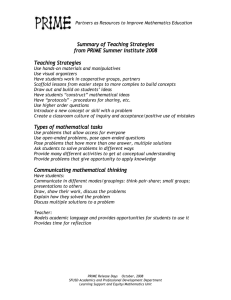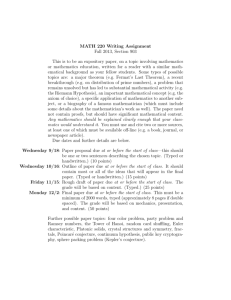REVIEW of the book Structure and Randomness pages from year by
advertisement
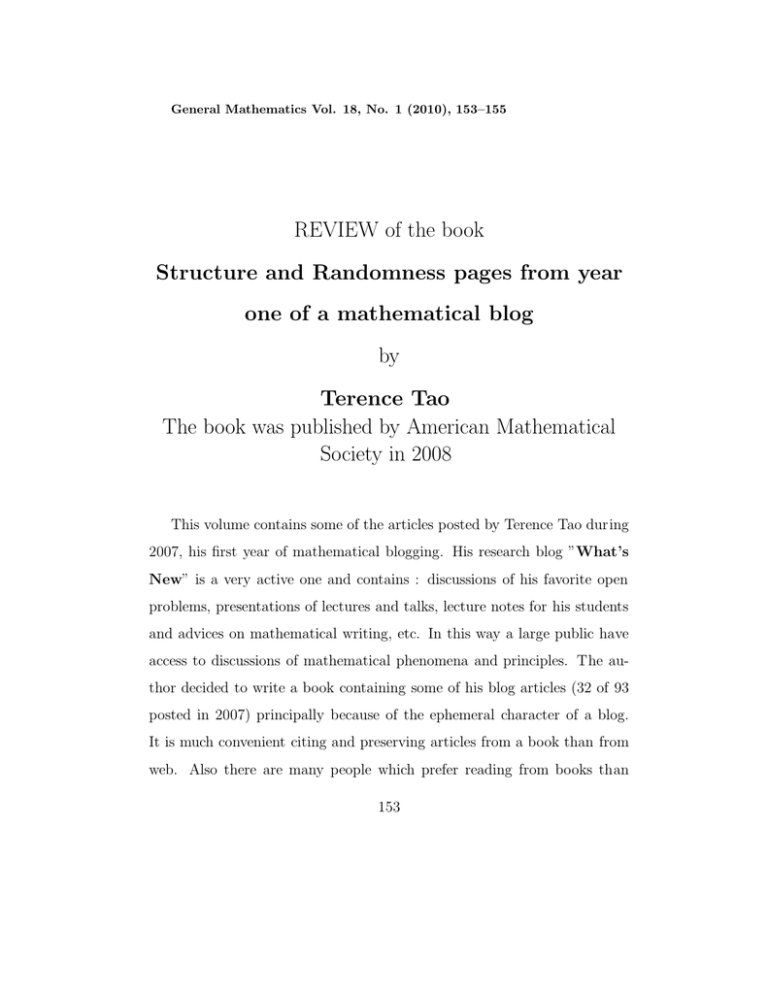
General Mathematics Vol. 18, No. 1 (2010), 153–155 REVIEW of the book Structure and Randomness pages from year one of a mathematical blog by Terence Tao The book was published by American Mathematical Society in 2008 This volume contains some of the articles posted by Terence Tao during 2007, his first year of mathematical blogging. His research blog ”What’s New” is a very active one and contains : discussions of his favorite open problems, presentations of lectures and talks, lecture notes for his students and advices on mathematical writing, etc. In this way a large public have access to discussions of mathematical phenomena and principles. The author decided to write a book containing some of his blog articles (32 of 93 posted in 2007) principally because of the ephemeral character of a blog. It is much convenient citing and preserving articles from a book than from web. Also there are many people which prefer reading from books than 153 154 online. Other volumes will surely come as he assures. Tao organize his articles, after a conversion into print form, in three categories : 1. Expository writing about mathematical ideas, topics and techniques close to Tao’s research interests. 2. Simons lecture series at MIT on structure and randomness; Ostrowski lecture at the University of Leiden on compressed sensing and Milman lectures at the University of Washington on additive combinatorics. 3. Discussions on various open problems. In the first category articles Tao is always full of good ideas to approach different things. He gave an interesting discussion on ”Soft analysis, hard analysis, and the finite convergence principle” that is also accessible to students in mathematics. Also in the first part he present a less abstract proof for the Jordan normal form for a matrix than the one using the structure theorem for finitely generated modules over a principal ideal domain. Further he is using it in order to study unipotent elements of the Lorentz group. It is also exposed a discussion about crossing number inequality used in graph theory and its applications. This inequality is a powerful tool, used by graph theorists, which give easy proofs of several difficult inequalities in combinatorial incidence geometry. It is perhaps not well known among the wider mathematical community. I particularly appreciate the article on how the amplification trick in harmonic analysis can lead to some proofs of sharp inequalities, which are difficult to establish by more direct means. In another interesting article the author present some standard applications of the Hahn-Banach theorem, such as the separation theorem of Dieudonn, the minimax theorem of von Neumann, Menger’s theorem, and Helly’s the- 155 orem. The articles in the second group represent a more standard way of writing mathematics: lecture notes of his own work. The problems treated give also the title of the book. In the third section Tao shows his approach to some open problems. He explain why it is hard to apply some good strategies in order to answer the questions. This volume is a very well collected issue, it contains valuable historical and mathematical facts. It is warmly recommended to analysts and specialists in mathematics. I also recommend it for engineers and to graduate students interested in different areas of mathematics. I strongly enjoyed the style of presentation. Laurian Suciu Department of Mathematics, Faculty of Sciences ”Lucian Blaga” University of Sibiu, Romania
